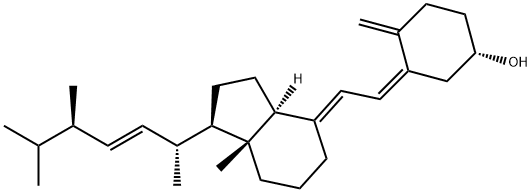Vitamin D aids in the absorption of calcium and has central roles in bone formation and maintenance, hypertension, cancer and immunity. Vitamin D may be obtained from many dietary sources, including eggs and fish, and is synthesized in the skin by the conversion of 7-dehydrocholesterol to vitamin D3 by ultraviolet light. Vitamin D2 is produced in fungi, including yeast, and invertebrates from ergosterol in response to ultraviolet radiation. In vertebrates as well as host organisms, vitamin D2 is metabolized first to 25-hydroxyvitamin D2 and subsequently to the active 1,25-dihydroxyvitamin D2. Differences in the metabolism and action of vitamin D2 vs. vitamin D3 in mammals is a current topic of research interest.

